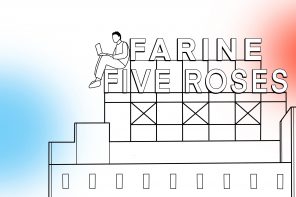I am constantly fascinated by the intricate communication networks that form between McGill students, a feat which is especially impressive considering how large and culturally diverse our school is. No matter your background, McGill can feel like an extremely daunting environment upon arrival.
At times, the density of McGill may foster a feeling of anonymity and suppression, which is exacerbated by the limited outlets of expression at our school. We have an inherent need for affiliation and recognition, and in order to satisfy these needs, we need adequate channels through which we can make meaningful connections and feel comfortable expressing our feelings and frustrations. In this setting, students must craft communication channels to curate some form of order among the disorder of our student body.
While these formal communication channels are increasingly abundant each year, McGill students also use informal networks to communicate and connect with one another.
For many at McGill, it can be difficult to find a community that allows for meaningful self-expression. As a result, we look for other ways to release our aggression or provide support for the people around us. There are many student organizations that cater to these needs. McGill’s Peer Support Centre and Nightline provide support for students struggling with isolation or loneliness. Dozens of clubs exist that cultivate a smaller community within the larger McGill student body (like, hey, The Bull & Bear!).
While these formal communication channels are increasingly abundant each year, McGill students also use informal networks to communicate and connect with one another. McGill-related subreddits and meme accounts are examples of some of these informal networks that bond students and help us express frustrations with our collective university experience.
A particularly unique informal way in which McGill students communicate with each other is the method of writing on the walls of restroom stalls. I most often see these messages in McLennan and Redpath, where thousands of restroom-users over the years have engaged in forums over a range of topics and with a vast variety of pens.
Restroom graffiti provides an outlet that online forums and student organizations cannot, because they are interactive and because they catch McGill students at their most vulnerable. We all have to use the restroom at some point in our studying sessions, so confrontation with these odd and sometimes unsettling conversations is unavoidable.
In one stall, “Where can I get addy?” sits next to, “What does it feel like to not be in pain?” and, “I listen to sea shanties.” “If you’re going thru pain, know that there is light even in the tunnel. It’s called HOPE,” is written in blue pen right next to, “Everything is stupid,” in black Sharpie, followed by “FAT MOOD TBH,” in what appears to be a pink gel pen.
Some of these inscriptions have clear social or political motives, like those exhorting McGill to divest from fossil fuels. “Trans rights are human rights,” reads one such socially-conscious note. Others appear to be a cry for help: “Should I transfer to Concordia? This school makes me feel worthless,” divulges another.
I have some questions regarding these unconventional pen pal messages. Why is this—the writing of notes on literal toilet stalls—the outlet people choose? What compels someone to write or respond to a message? More strongly, I question the mindset of these writers and wonder if these messages are actually serious, or if these restroom scrawls should only be taken lightheartedly.
I wonder if there is something about these spaces being uniquely geared for women that compels people to write their thoughts here.
Having only used the female restrooms myself, I wonder if there is something about these spaces being uniquely geared for women that compels people to write their thoughts here. A space like this can be difficult to find at McGill and the restroom may provide a unique source of comfort that allows for honesty and open communication. These messages are also rarely tagged with names, so the factor of anonymity may also allow people to more willingly share personal details; it’s basically a form of real-life Twitter without having your name attached, and perhaps that’s why some of these messages seem so genuine.
I personally find comfort in many of these messages, as the intimate and sometimes humorous inscriptions provide a respite from the stressful and often-times isolating library environment. However, some are not so happy with this practice; one stall is marked somewhat aggressively with, “Stop writing on the doors!” After all, this graffiti, though charming, is still a minor destruction of property.
Nevertheless, I believe that the practice of writing on restroom stalls around McGill is a truly unique part of student culture that unifies and relates us to each other in a way that cannot be seen in any other place. The library restrooms see us at our most vulnerable and stir-crazy; it only feels natural that these stalls provide a meaningful outlet for our worries. This communication medium is unavoidable, confrontational, intimate, and—provided one is equipped with a Sharpie and a creative mind— entirely interactive.









Funny. In the early ’90’s I shot and directed a mockumentary about the toilets of McGill for the short-lived iLL TV — not sure if it still exists. Classic method of communication, bathroom stall graffiti at its most base is our culture’s pervasive lack of respect for public facilities — nobody would do same at their place of work — and symptomatic of our public toilet culture at-large.